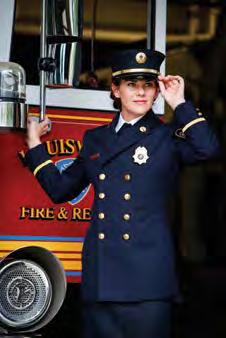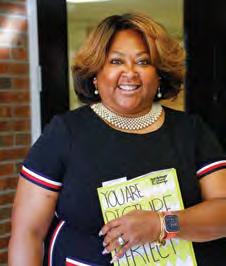
1 minute read
Today's Woman October Cover Woman - Ashby Anderson
Ashby Anderson Sergeant, Fire Inspector 1, Public Education at the Louisville Fire Department
CATEGORY: Creative Education
Ashby Anderson spent nearly 10 years as a frontline firefighter, but now she is using her skills and knowledge to stop the fires before they start. She is teaching fire and life safety to kids, college students, older adults, healthcare workers, businesses, and school administrators. Ashby says it is important for people to understand how to make responsible decisions regarding fire safety. “It is so much more than showing off our trucks and firefighters. It’s finding who needs what in terms of safety information and providing that information on a level that it is well received and promotes a behavior change,” she says.
Teaching technique: Conversation paired with relevant data references supplemented with a lot of visual aids. Most of the time I have one opportunity to get the information across, so I engage them with discussion and relevance. Our high risk groups have learning barriers so I use visual aids to reinforce messages.
Changes she hopes to see: It makes sense to integrate fire and life safety into science and math lessons at primary and middle school levels. Fire is a chemical reaction, and by capitalizing on this we could kill two birds with one stone. I’m currently working on piloting a common-core-aligned fire safety program centered around smoke alarm awareness for the Metro’s elementary schools in high risk areas. Sound Off With The Home Fire Safety Patrol has enormous value because it teaches smoke alarm awareness, importance, and purpose. It is also common-core-aligned and meets various math, language arts, and national health education standards as well as offers free smoke alarm installation for students whose homes are without.
Best Icebreaker question for students: Introduce and be myself. The uniform can be intimidating, and it’s important I bring us to a place of mutually comfortable conversation. If there is a relevant piece of data that surprised me, I use that for the shock factor. I encourage participation from the beginning by asking questions like, “Does anyone know how hot sparklers burn?” or “How many of you have ever burned yourself cooking?”
Today’s Woman / October 2020










